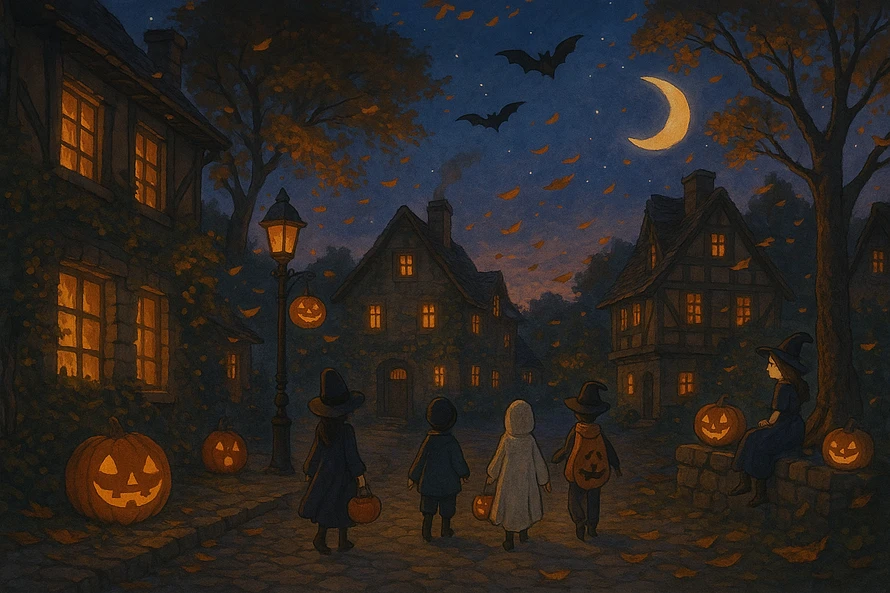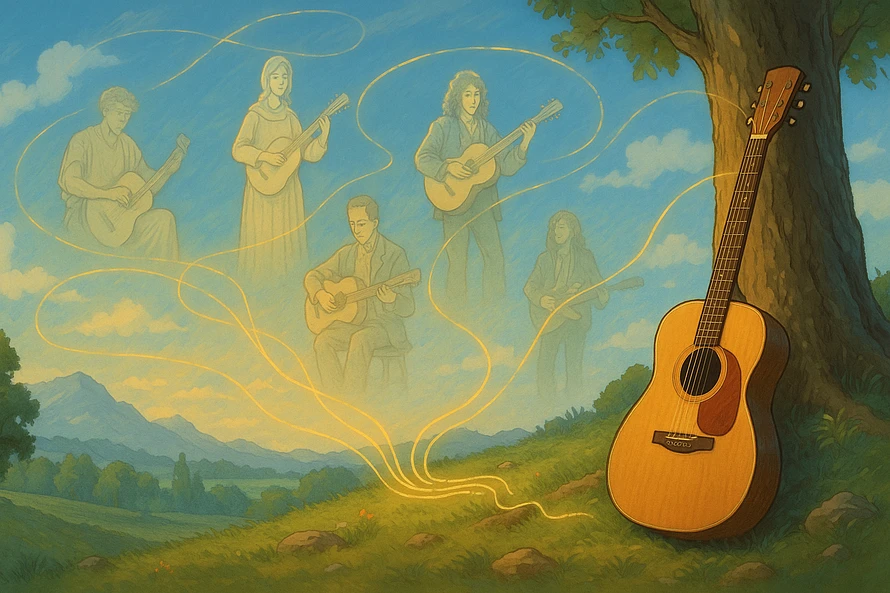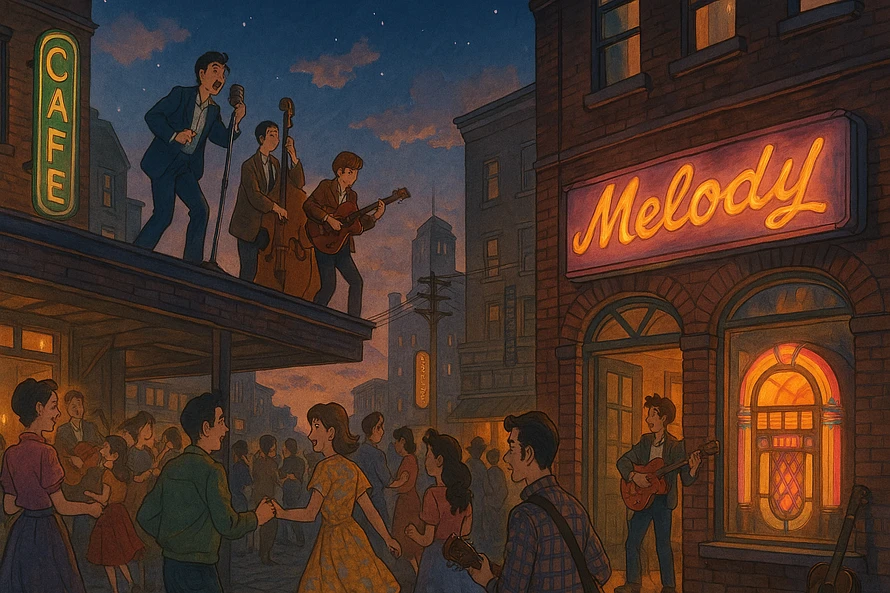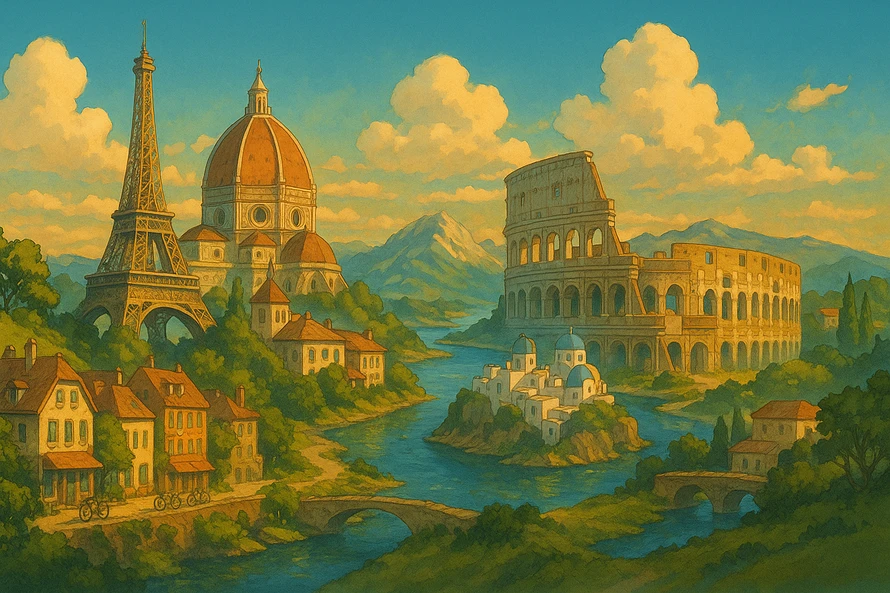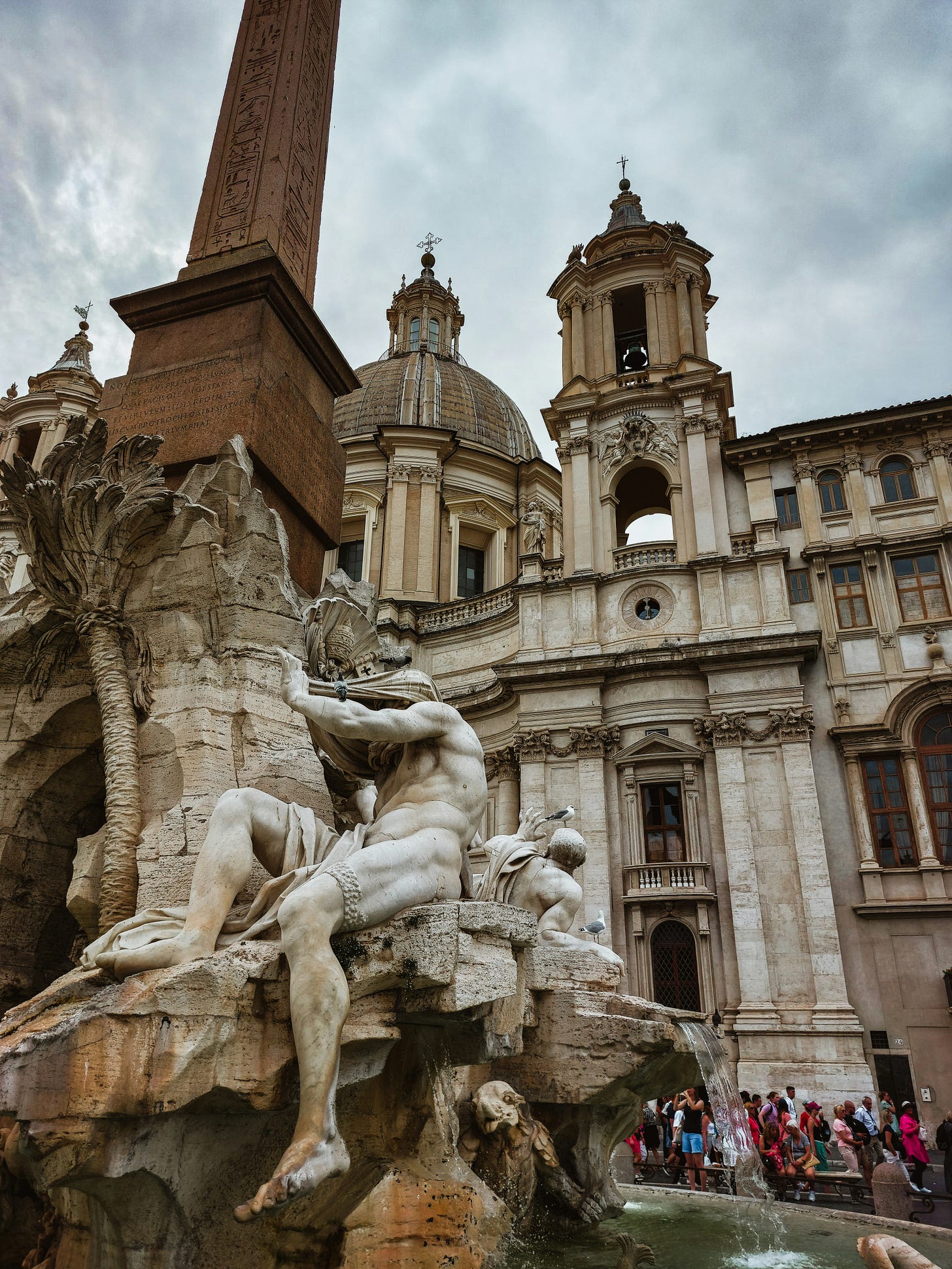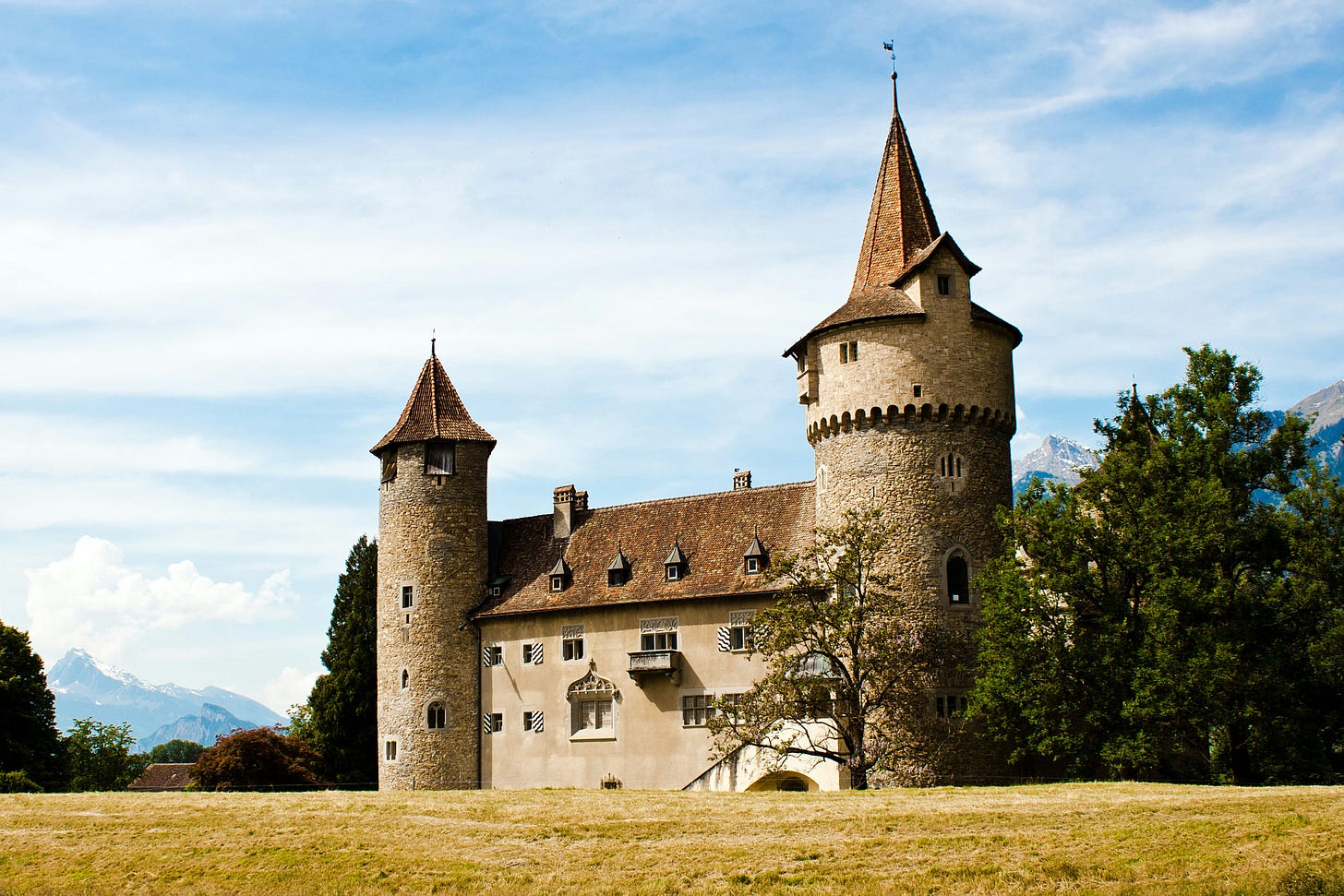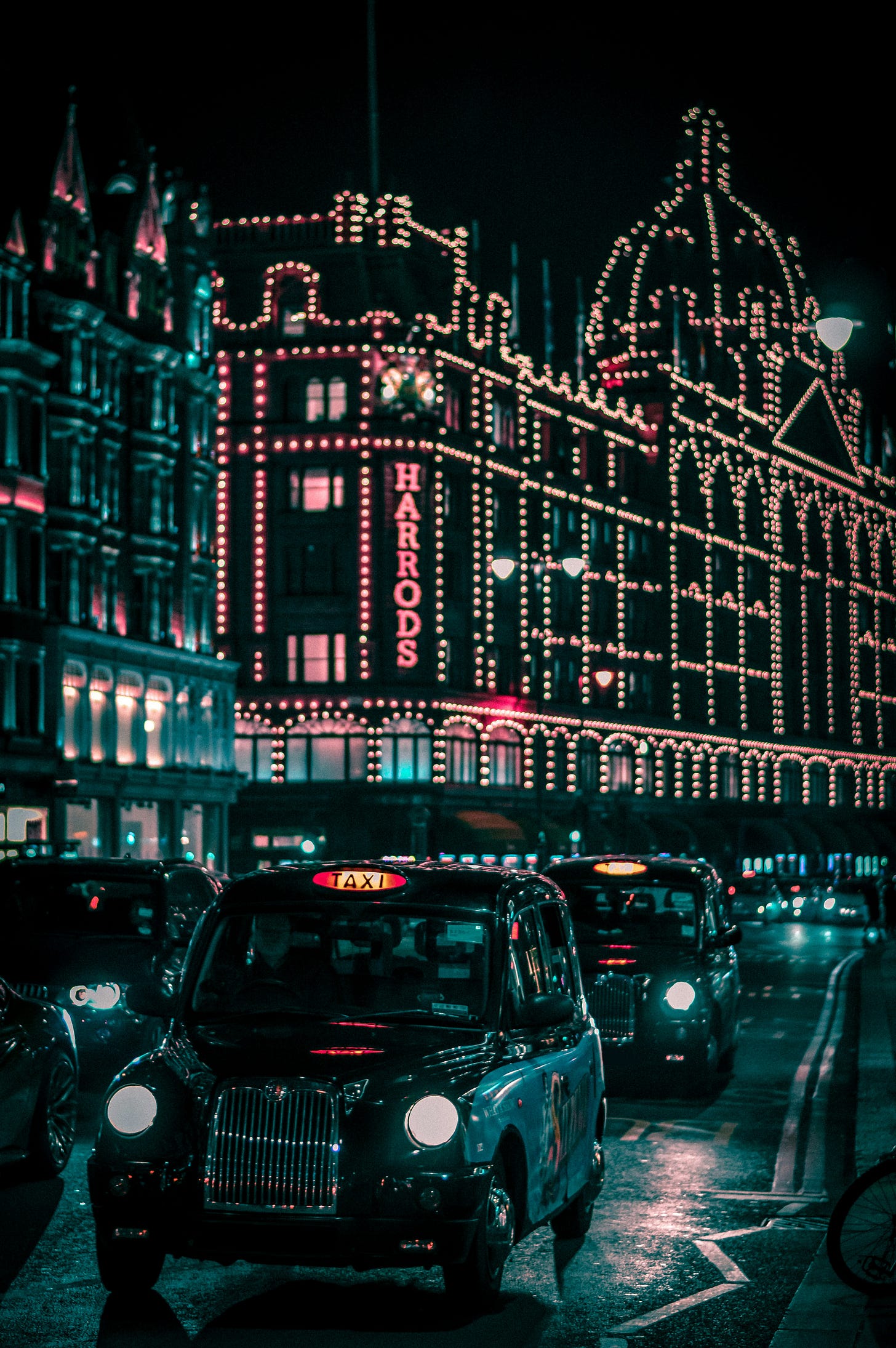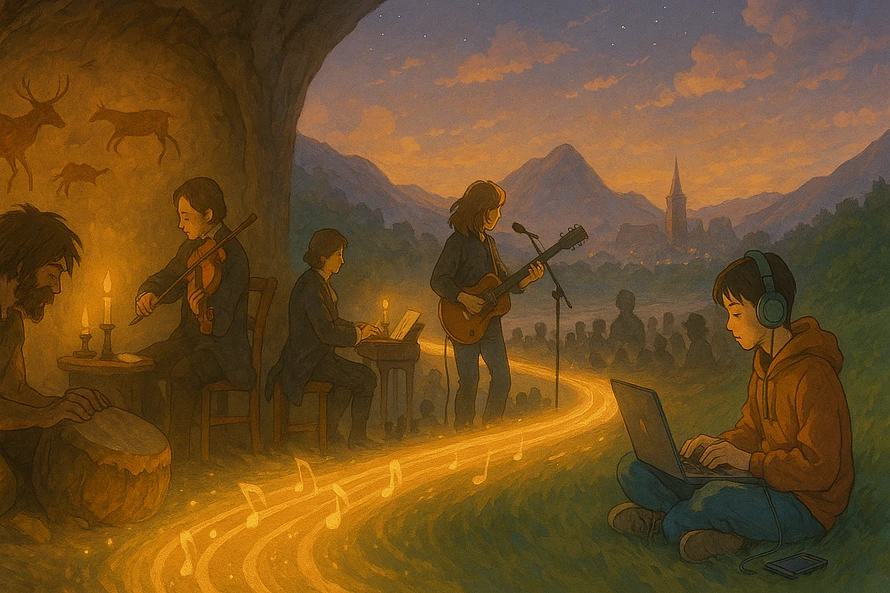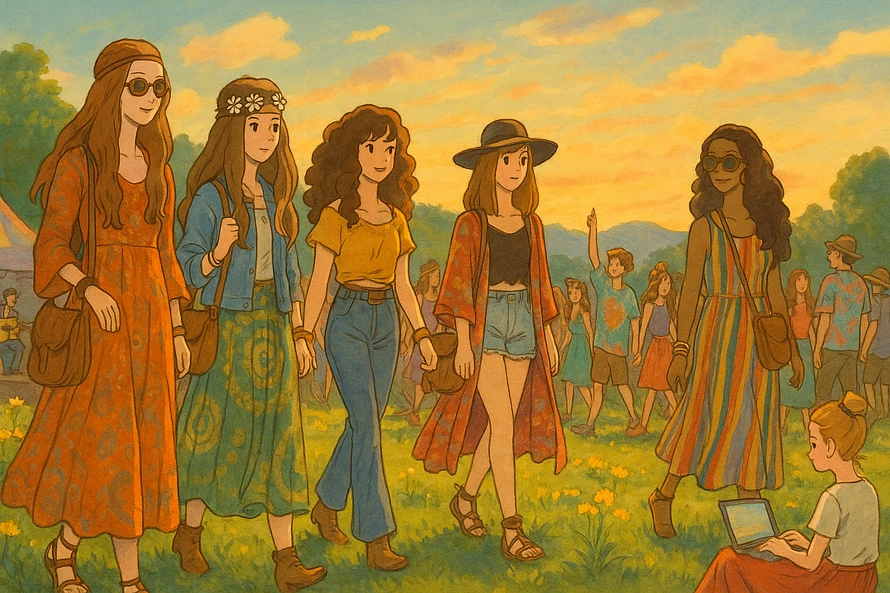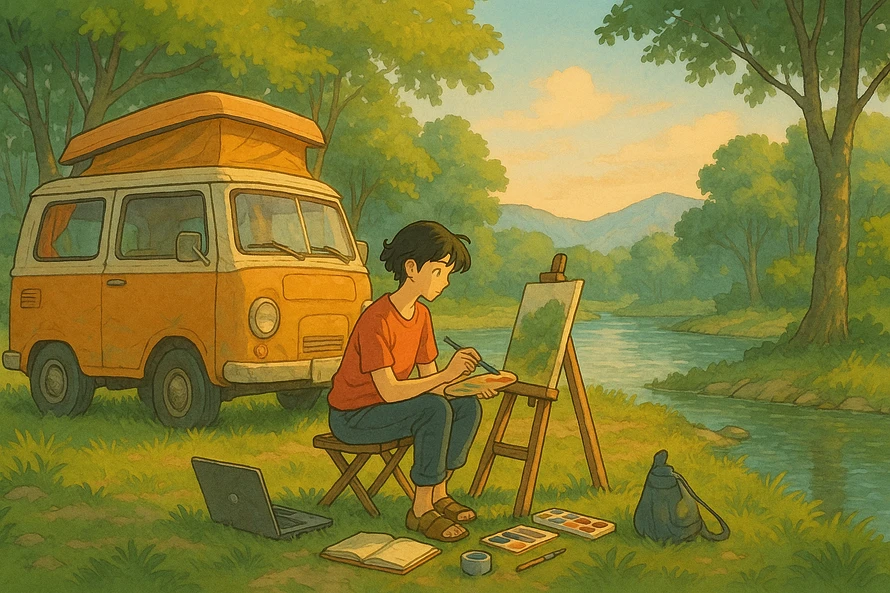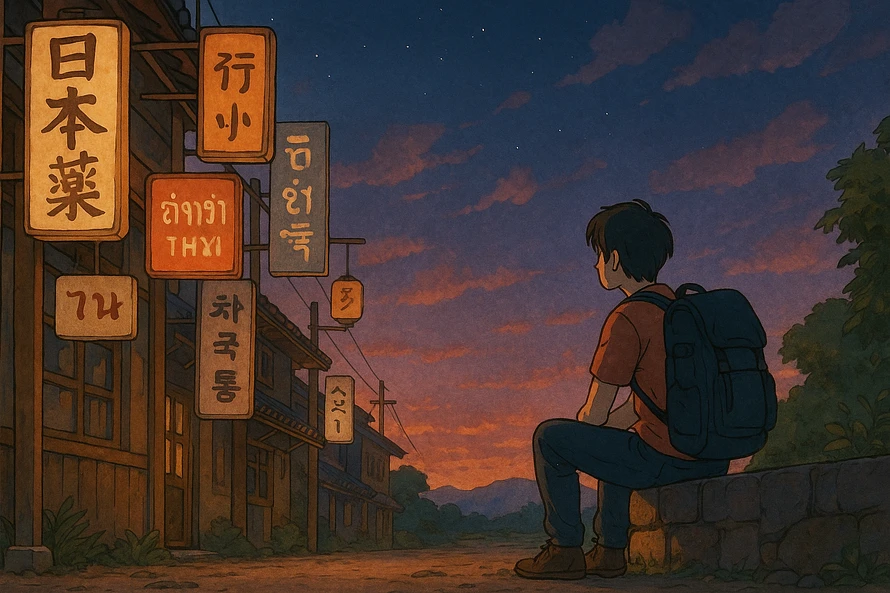The guitar. A simple instrument, yet one that has shaped the course of music history. Its strings have been strummed, plucked, and shredded by countless musicians, each leaving their unique imprint on its legacy.
The guitar’s story is a rich tapestry, woven with threads of innovation, cultural shifts, and legendary musicians. It’s a story that spans centuries, continents, and genres.
From the courtly airs of Renaissance Europe to the gritty blues of the Mississippi Delta, from the electrifying rock and roll of the 1950s to the introspective grunge of the 1990s, the guitar has been there, providing the soundtrack to our lives.
But where did this iconic instrument come from? How did it evolve from its humble origins to become a symbol of rebellion, a tool for social change, and a canvas for musical innovation?
And who are the legendary old timers who have shaped its history and left an indelible mark on our culture?
From Robert Johnson’s haunting Delta blues to Chuck Berry’s pioneering rock and roll riffs, from Jimi Hendrix’s psychedelic explorations to Kurt Cobain’s raw grunge anthems, we celebrate the guitarists who have pushed the boundaries of what the instrument can do.
The Ancient Roots of the Guitar
The guitar’s story begins in the distant past, where its earliest ancestors strummed in the hands of forgotten musicians. It’s a tale that spans continents and cultures, revealing an instrument with ancient origins that still resonates today.
Ancient civilizations revered stringed instruments, using them in rituals, entertainment, and daily life.
Among these, the lute and the oud played pivotal roles. These instruments became critical links in the guitar’s evolutionary chain. Their design and sound would inform the development of many stringed instruments, including the guitar.
The oud, emerging from the Middle East, was a short-necked, pear-shaped instrument that still enchants musicians.
It had a profound influence, giving rise to the lute, which found fame in Europe. The lute’s intricate craftsmanship and melodic versatility captivated those who heard its sound.
Fast forward to medieval Europe, where the lute became a staple in courts and among the educated elite. This period saw significant advancement in instrument design and technique.
The lute’s popularity blossomed across Europe, from the British Isles to the Mediterranean coast.
The guitar’s lineage is also intertwined with other ancient instruments, such as the kithara and the cithara. These instruments bore some physical resemblance to what would become the guitar. Their string configurations and playing styles influenced future designs.
Here’s a look at early influences that contributed to the guitar’s development:
-
The oud from the Middle East inspired the lute.
-
The lute, popular in European courts and households.
-
Various harps and lyres from ancient Greece and Rome.
-
The kithara and cithara, precursors in structure and styling.
Together, these ancient instruments formed the guitar’s foundation. They contributed essential elements, preparing the ground for the guitar’s evolution.
As musical tastes and technologies advanced, so too did the guitar. It continued to evolve and adapt, reflecting the diverse cultural landscapes of its creators.
The Lute and the Oud: Precursors to the Modern Guitar
To understand the guitar, we must first turn our gaze to the lute and the oud. These two instruments significantly influenced the design and function of what we now recognize as the guitar.
The oud, with its origins in the Arab world, is one of the oldest stringed instruments known. Its name means “wood,” emphasizing the vital role wood played in creating its hollowed, resonant body. The oud became central to musical cultures in the Middle East.
In turn, the lute borrowed heavily from the oud’s design. It arrived in Europe through cultural exchanges, most notably during the Moorish presence in Spain.
The Europeans then modified the oud, giving rise to the lute’s more elongated neck and distinctive bowl-shaped back. This evolution allowed for greater expressiveness and tonal range.
By the Renaissance, the lute dominated European music. It became synonymous with the noble classes, reflecting both wealth and cultured taste.
Composers wrote complex scores for the lute, showcasing its ability to produce intricate melodies and harmonies. It was a celebration of the instrument’s craft and the player’s skill.
The lute’s influence is unmistakable in early guitars, sharing similar shapes and fret configurations. Its techniques, too, became rooted in guitar playing, with finger-styled plucking paving the way for classical guitarists.
Both the oud and the lute left a legacy that persists in today’s guitar designs and performance styles. Their contributions underscore the guitar’s ancient roots, a testament to the innovation and artistry of past musicians. Each strum brings to life their historical echo.
The Renaissance and the Vihuela: Shaping the Guitar’s Form
As the Renaissance swept across Europe, it brought a rebirth of arts, sciences, and music. This cultural surge played a crucial role in transforming the guitar into a distinct instrument with its own identity.
The vihuela, emerging in 15th-century Spain, was instrumental in shaping the guitar’s path. Often confused with the lute, the vihuela had a flat back and a string configuration that mirrored what we recognize in modern guitars.
Its name even suggests a Latin origin, linking it to the ancient Roman word “viola.”
The vihuela’s design made it versatile and suitable for a range of musical styles. As a preferred instrument in Spanish courts, it accompanied dance, song, and individual performances. Its format allowed musicians to experiment with new genres and techniques.
The vihuela was popular in Spain and Portugal, and it set standards for the construction and tuning of string instruments. Its influence extended beyond Iberia, resonating across the continent and impacting emerging string instruments.
The transition from the vihuela to the modern guitar wasn’t immediate. Instead, it unfolded over time, reflecting regional variations and innovations. The guitar absorbed characteristics from other stringed relatives, evolving into distinct forms in different European countries.
Artisans and musicians experimented with materials, string compositions, and sizes. The desire to enhance sound quality and playability led to incremental advancements. These experiments laid the groundwork for the classical guitar that would soon rise to prominence.
In this historical context, the guitar was not just an instrument but a symbol of cultural transformation. It represented the synthesis of traditional craftsmanship with the drive toward musical exploration.
Its voice would soon echo in concert halls and beyond, a testament to the enduring power of strings struck in harmony.
The Birth of the Classical Guitar
The classical guitar, as we know it, emerged through a fascinating journey of transformation. During the 18th and 19th centuries, the guitar underwent significant changes that helped define its modern identity. Innovations in construction and design were key to this evolution.
Spanish craftsmen played a crucial role in refining guitar designs. Their expertise transformed older models into instruments capable of richer sound and greater playability. This era marked the shift from simple, rustic guitars to the sophisticated classical model that we cherish today.

The introduction of fan bracing, a method involving a pattern of braces inside the guitar’s body, revolutionized sound production.
It allowed for greater resonance, enabling the guitar to be heard in larger venues. This crucial innovation contributed to the instrument’s increased popularity.
Throughout this period, the guitar transitioned from being solely an accompaniment instrument to taking center stage in performances.
Musicians and composers began to write complex pieces specifically for the guitar. This shift reflected the growing recognition of the guitar as a legitimate concert instrument.
French and Italian workshops also impacted classical guitar development. They experimented with body shapes and soundhole designs.
This experimentation led to varied tonal qualities, expanding the guitar’s repertoire. Cultural exchanges facilitated by trade and travel contributed to these developments.
The classical guitar became central to the Romantic music era. Its expressive range made it an ideal medium for conveying emotion.
The instrument’s ability to articulate nuances of touch and dynamics endeared it to composers. Legends like Francisco Tárrega and Fernando Sor transformed guitar techniques during this golden era.
By the late 19th century, the classical guitar had solidified its place in musical traditions. It not only charmed audiences but also inspired countless future guitarists.
The stage was set for further evolution, driven by the innovations of a pioneering luthier who would redefine the instrument.
Antonio de Torres: The Father of the Modern Guitar
Antonio de Torres, hailed as the “father of the modern guitar,” left an indelible mark on the instrument’s history. In the 19th century, his innovative designs defined the classical guitar we recognize today. A Spanish luthier, Torres, revolutionized guitar construction.
Torres implemented numerous innovations that reshaped the guitar’s sound and form. He expanded the guitar’s body size, enhancing its volume and tonal richness. This change allowed the classical guitar to project sound more effectively in concert settings.
One of Torres’ notable contributions was the introduction of fan bracing. This internal support structure optimized the guitar’s resonance and stability. Fan bracing remains a cornerstone of classical guitar construction, recognized for its impact on the instrument’s sound.
Torres also emphasized the importance of material selection. His preference for quality woods, like spruce and cedar, ensured superior acoustic properties. This attention to materials set a new standard for quality in guitar manufacturing.
Beyond his technical achievements, Torres elevated guitar crafting to an art form. His approach to design emphasized aesthetic beauty and functional precision. Each guitar he created was a masterpiece, reflecting his dedication to excellence.
The influence of Torres extends beyond his lifetime. His innovations inspired future generations of luthiers and musicians. Today, his legacy endures in every note struck on a classical guitar, a testament to his visionary craftsmanship.
The Evolution of Guitar Craftsmanship and Design
The evolution of guitar craftsmanship and design is a story of creativity and adaptation. As music and culture evolved, so too did the guitar. Artisans embraced new techniques and materials to enhance the instrument’s artistry and performance.
One of the key advancements in guitar craftsmanship was the introduction of new materials. The transition from gut to nylon strings in the 20th century offered greater durability and consistency. Nylon strings became a staple in classical guitars, enriching sound quality.
Instrument makers also explored new woods and composites. Each choice affected the guitar’s tonal qualities, allowing musicians to find instruments that matched their artistic vision. This exploration sparked a variety of guitar designs, tailored to diverse musical genres.
Advancements in technology played a vital role in refining guitar construction. Precision tools and machinery enabled artisans to achieve exacting standards.
Modern techniques allowed for the mass production of high-quality guitars, making the instrument accessible to more people.
Crafting techniques evolved alongside design innovations, including advancements in joint construction and finish application. These changes improved the guitar’s resilience and appearance, ensuring it remained appealing to both players and collectors.
The global exchange of ideas enriched guitar design. Craftsmen from different cultures shared techniques and styles, leading to a diverse range of instruments. This cultural fusion fostered an innovative environment where guitar design flourished.
Today, the legacy of guitar craftsmanship is celebrated in workshops worldwide.
Passionate luthiers continue to experiment and refine, driven by the quest for perfect sound and form. The guitar remains a symbol of artistic evolution, a vessel for musical expression across generations.
The Rise of the Steel-String Acoustic Guitar
The evolution of the steel-string acoustic guitar marked a pivotal moment in musical history.
During the late 19th and early 20th centuries, guitars equipped with steel strings began to gain prominence. This transformation heralded a new era in music production and performance.
The adoption of steel strings introduced a new tonal dynamic. The increased tension and durability enhanced volume and brightness, making these guitars ideal for solo performances and ensemble settings.
This quality was attractive to musicians seeking an instrument that could project over other instruments in a band.

Increased volume wasn’t the only advantage. Steel strings offered greater sustain, allowing notes to hold longer, adding depth to musical pieces. This was particularly influential in folk and blues genres, where musicians exploited these qualities for expressive musical storytelling.
Moreover, the rise of steel-string guitars coincided with important cultural shifts.
The instrument became a staple for folk artists, symbolizing grassroots traditions and the voice of the common people. Its accessibility and adaptability endeared it to a wide range of players, from beginners to advanced musicians.
Construction techniques evolved alongside this transition. Luthiers experimented with body shapes and bracing patterns to accommodate the tension of steel strings.
The dreadnought body style emerged during this time, known for its deep, resonant sound, and became a popular choice for guitarists across genres.
This period also saw the guitar’s role expand into popular music. As the steel-string guitar’s reach grew, so did its impact on music culture. It became a fixture in recording studios and concert halls, solidifying its status as a versatile and indispensable instrument.
The steel-string acoustic guitar paved the way for various music styles. It provided the foundation for genres like country, bluegrass, and new acoustic music to flourish.
Musicians were able to explore different tunings and techniques, enriching their compositions and performances.
As the 20th century progressed, steel-string guitars remained integral to musical innovation.
Their influence helped shape the sound of countless albums and songs, contributing significantly to the evolution of modern music. This transformation in string technology proved vital to the guitar’s universal appeal.
The Transition from Gut to Steel Strings
The transition from gut to steel strings wasn’t simply a material change. It reflected broader shifts in music and society. In the late 1800s, steel strings emerged as a technological breakthrough, appealing to the evolving needs of musicians.
Initially, gut strings were preferred for their warm, mellow tones. However, they required frequent maintenance and were sensitive to climate changes.
The advent of steel strings provided a more robust alternative, offering durability and consistent sound across environments.
Steel strings also allowed for stronger attack and projection, essential for larger performance venues and emerging recording technology. This transition aligned with the industrial era’s move towards mass production and innovation in musical instruments.
Not everyone embraced this change immediately. Classical guitarists and traditionalists hesitated, valuing the softer tones of gut strings. However, folk and blues musicians quickly adopted steel strings, captivated by their bold and expressive qualities.
As steel strings gained popularity, manufacturers began designing guitars specifically for them.
Structural changes, like reinforced necks and modified bracing, ensured these guitars could withstand increased tension. This adaptation underscored the guitar’s versatility and capacity for technological evolution.
The transition also influenced playing styles. Steel strings facilitated new techniques, such as fingerpicking and slide guitar, expanding the instrument’s sonic possibilities. Players explored diverse genres, utilizing steel strings to express distinctive voices and styles.
Ultimately, steel strings revolutionized the music scene, bridging the past with modern innovation.
This evolution not only broadened the guitar’s reach but also cemented its status as a dominant force in popular music. The influence of steel strings continues to reverberate through music’s tapestry.
Iconic Acoustic Guitars: Martin, Gibson, and Alvarez Models
Martin, Gibson, and Alvarez, three names synonymous with acoustic guitar excellence.
Each brand has played a crucial role in the development and popularization of steel-string guitars. Their innovative models have become icons in their own right, inspiring generations of musicians.
C.F. Martin & Company is renowned for pioneering the dreadnought body style. This design, with its larger size, maximized resonance and projection.
Models like the Martin D-28 became staples for folk and bluegrass musicians, renowned for their powerful sound and tonal balance.
Gibson, meanwhile, brought its blend of innovation and artistry to the acoustic realm.
The Gibson J-45, affectionately known as the “Workhorse,” set the standard for dynamic versatility and robust performance. Its warm tones and rich bass made it a favorite among singer-songwriters.
Alvarez carved a niche with its commitment to quality craftsmanship and affordability.
Notable for producing guitars that delivered professional sound without prohibitive costs, Alvarez’s designs resonated with both budding musicians and seasoned players. The brand’s reputation for reliability and tone has endured.
These manufacturers did more than craft quality instruments. They nurtured creative communities, supporting musicians and fostering new musical styles. The legacy of these iconic brands is evident in their continued relevance and influence across music genres.
The impact of Martin, Gibson, and Alvarez extends beyond individual models.
Their guitars have played key roles in seminal recordings and live performances, creating enduring legacies. From Bob Dylan’s protest songs to Woody Guthrie’s folk anthems, these instruments shaped iconic sounds of the 20th century.
Today, each brand remains at the forefront of acoustic guitar innovation. They continue to inspire new generations with reimagined classics and avant-garde designs.
The enduring appeal of Martin, Gibson, and Alvarez guitars lies in their ability to adapt while preserving the essence of their rich musical heritage.
The Electric Revolution: The Invention of the Electric Guitar
The invention of the electric guitar in the 1930s marked a turning point in music history.
This pivotal development transformed how music was created, performed, and experienced. As electricity became more accessible, visionaries sought ways to amplify instruments for larger audiences.
The electric guitar’s birth didn’t happen overnight. Early experiments focused on increasing volume without compromising sound quality. These efforts were driven by the demands of jazz orchestras, where guitars often struggled to be heard over brass and percussion sections.
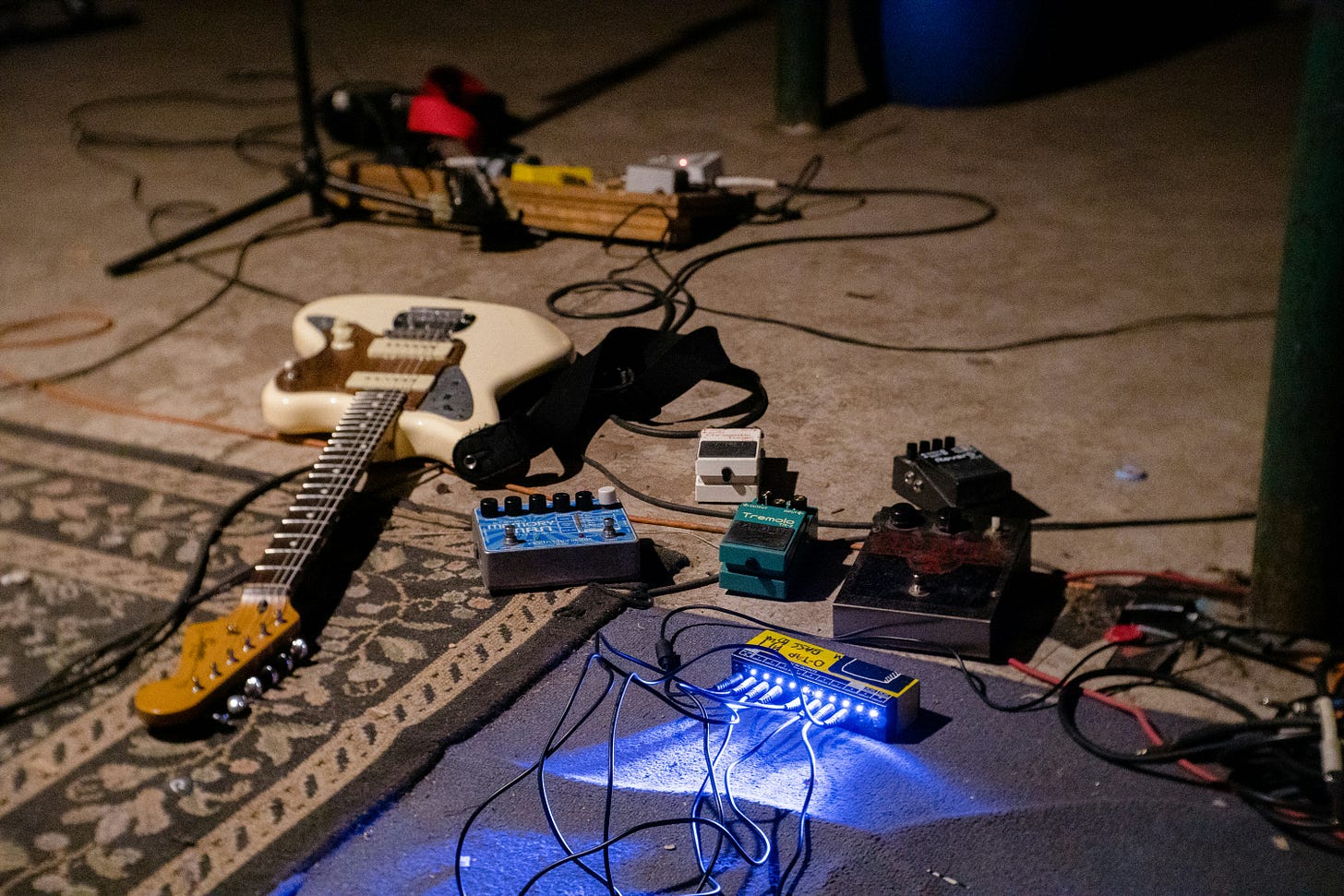
The first true electric guitars, like the Rickenbacker “Frying Pan,” were unique in design and function.
These instruments featured innovative pickups that converted string vibrations into electric signals, amplified by external devices. This new approach allowed guitars to cut through dense arrangements, making them a staple in bands.
By the 1950s, the electric guitar had become an emblem of modern music. Its electrifying sound captured the energy of an era characterized by cultural shifts and artistic experimentation.
The electric guitar enabled musicians to explore new sonic territories, leading to the creation of iconic riffs and solos.
The rise of rock and roll further cemented the electric guitar’s status. Musicians like Chuck Berry harnessed their power to create rhythmically complex and emotionally charged music that resonated with young audiences.
The guitar became a vehicle for rebellion, freedom, and self-expression.
With its newfound prominence, the electric guitar influenced genres beyond rock and roll. Jazz, blues, and eventually heavy metal began incorporating electric elements, expanding their musical landscapes.
The guitar became a bridge, uniting various musical traditions and pushing creative boundaries.
Looking back, the electric guitar’s invention wasn’t just about increasing volume. It signaled a revolutionary change in music’s relationship with technology.
It allowed artists to express themselves in ways that were previously unimaginable, forging a lasting impact that continues to inspire musicians worldwide.
Pioneers of Electric Guitar Technology
The development of electric guitar technology owes much to the pioneering work of a few visionary individuals.
These innovators laid the groundwork for the instrument’s modern iteration, each contributing unique ideas and solutions to the challenges of amplification and sound.
Adolph Rickenbacker is among those early pioneers who deserve recognition. His work on the “Frying Pan” lap steel guitar was groundbreaking.
This instrument, produced in the early 1930s, featured electromagnet pickups that converted string vibrations into electric signals.
Rickenbacker’s technology opened doors, leading others to explore the electric guitar's potential. Meanwhile, George Beauchamp, a musician and inventor, played a crucial role.
His collaboration with Rickenbacker resulted in the first production electric guitars, paving the way for further innovation.
Les Paul’s contributions to electric guitar advancement cannot be overstated. An accomplished guitarist and inventor, Paul was instrumental in designing solid-body electric guitars.
His prototypes reduced feedback issues, enhancing sound clarity and sustain, key features of modern electric guitars.
Paul’s legacy didn’t end with his early models. His partnership with Gibson led to the creation of the Gibson Les Paul, a guitar that became synonymous with quality and versatility. It remains a favorite among musicians, known for its rich, warm sound and craftsmanship.
These early innovators didn’t just innovate; they inspired. Their work set the stage for future advancements in guitar technology, influencing both the instrument’s capabilities and its cultural significance.
Through their efforts, the electric guitar emerged as a central icon of 20th-century music.
The world of electric guitar technology continued to evolve, driven by these pioneering minds. Their foundational innovations paved the way for future generations to expand and explore the electric guitar’s possibilities, ensuring its place in the pantheon of musical invention.
Fender and Gibson: Crafting the Sound of a Generation
The Fender and Gibson brands hold legendary status in crafting the electric guitar’s modern sound. Their competitive innovation and remarkable craftsmanship helped define the sonic identity of an entire generation, playing a pivotal role in the evolution of popular music.
Fender, founded by Leo Fender in the 1940s, revolutionized the electric guitar with models like the Telecaster and Stratocaster. These guitars featured a solid body, which minimized feedback and allowed for crisp, clear tones that quickly became integral to rock music.
The Fender Stratocaster, in particular, became iconic for its sleek design and versatility. Its distinct tone, three single-coil pickups, and easy playability made it a favorite among guitarists. Legends like Jimi Hendrix and Eric Clapton embraced its sound, cementing its status.
Gibson, meanwhile, pushed the envelope with its luxurious designs and rich tones. The Gibson Les Paul, introduced in the 1950s, offered a thicker, more resonant sound. It became synonymous with rock, blues, and jazz, known for its robust build and aesthetic appeal.
These two brands didn’t just make instruments; they built legacies. Their guitars symbolized rebellion, freedom, and artistic expression. Players who wielded these instruments often defined the music of their time, leaving an indelible mark on history.
Beyond individual models, Fender and Gibson’s rivalry spurred continuous innovation.
Their pursuit of excellence led to advancements in guitar technology, materials, and aesthetics, benefiting musicians across genres. This competition cultivated a vibrant and dynamic landscape in the world of electric guitars.
The impact of Fender and Gibson extends beyond sound. Their instruments have been central to countless iconic performances and recordings, shaping the way we listen to and create music.
Their legacy endures, resonating with both seasoned professionals and aspiring musicians worldwide.
Legendary Old Timers and Their Impact on Guitar Music
The legacy of legendary old timers in guitar music is profound. Their contributions have shaped not only their genres but also the future landscape of music as a whole.
These pioneers laid the foundation for guitar playing as we know it today. They introduced new techniques, styles, and forms that changed the way we approach the instrument. Their influence can be felt across blues, rock, jazz, and beyond.
What’s remarkable about these musicians is their diverse backgrounds. They came from different places and had varying musical influences, yet each one left a unique mark on guitar history. Their stories and music continue to inspire new generations of guitarists.
Each of these iconic guitarists has their distinct sound. Whether through technical prowess, innovative compositions, or sheer charisma, their music resonates with listeners worldwide.
To truly appreciate their impact, we must delve into their lives, understanding the context in which they created their music. These individuals were more than musicians; they were cultural icons who broke barriers.
Their legacies endure, not just in music but in popular culture. They have influenced everything from fashion and language to the very nature of artistic expression.
Some of the greatest innovations in guitar playing came from these old timers. Their legacy and the standards they set challenge musicians to this day, pushing the boundaries of creativity.
Robert Johnson and the Delta Blues Influence
Robert Johnson’s impact on the guitar is legendary. Born in Mississippi, Johnson epitomizes the power of the Delta blues. His haunting voice, coupled with his innovative guitar techniques, captivated audiences.
Johnson’s life was shrouded in mystery, enhancing his enigmatic reputation. Despite a brief career, his contributions to music were immense. His recordings, though limited, showcased a masterful understanding of blues guitar.

He was known for his use of slide guitar, a method that brought a distinct emotional depth to his songs. Johnson’s melodic prowess and rhythm transcended traditional blues, influencing a multitude of musicians.
His track “Cross Road Blues” became emblematic of the blues spirit, combining desperation, longing, and hope. This song, along with others, profoundly impacted budding rock and blues musicians, setting a standard in emotional storytelling.
Even today, Robert Johnson is cited as a key influence by guitarists across genres. His unique style, songwriting, and mysterious persona continue to capture the imagination of those who seek to explore the roots of American music.
Johnson’s legacy is not just in the notes he played but in the intensity with which he delivered them. His deep understanding of his instrument and its emotional capacity ensured his place as a cornerstone in the history of music.
Rock and Roll Pioneers: Chuck Berry, B.B. King, and Others
The world of rock and roll was profoundly shaped by the contributions of Chuck Berry and B.B. King. These pioneers redefined guitar music, carving out new paths for future artists.
Chuck Berry’s influence is undeniable. Often hailed as the father of rock and roll, his signature riffs and showmanship set the stage for generations. Songs like “Johnny B. Goode” remain classics, embodying the spirit of 1950s American youth culture.
Berry’s ability to blend blues, rhythm, and country helped create a new musical landscape. His guitar style featured punchy, memorable riffs that have become a template for rock music. Berry’s lyrical wit and stage antics further amplified his impact.
B.B. King, on the other hand, was the torchbearer for electric blues. His expressive bends, smooth vibrato, and soulful voice made him an icon. King’s Lucille, his beloved guitar, sang tales of love and heartache that touched audiences worldwide.
King brought blues to mainstream audiences, influencing countless guitarists along the way. His approach to storytelling and emotion set a high standard for musicianship. His influence reached beyond the blues, informing the rock and roll ethos.
Together, Berry and King’s contributions laid critical groundwork. They combined technical mastery with personal expression, challenging and inspiring peers and successors. Their music and techniques remain essential studies for any aspiring guitarist.
Their legacies are seen not just in the music they created but in the movements they inspired, forever shaping the course of rock and roll and the wider musical landscape.
The British Invasion: The Beatles and The Rolling Stones
The British Invasion marked a seismic shift in popular music, with the guitar at its heart. Bands like The Beatles and The Rolling Stones redefined rock music, leaving an indelible mark on both sides of the Atlantic.
The Beatles revolutionized music with their innovative songwriting and unique sound. Guitarists John Lennon and George Harrison crafted melodies that blended rock, pop, and world music influences. Their work showcased versatility, creativity, and a willingness to experiment.
The band’s use of the electric guitar evolved over time. Early hits featured simple, catchy riffs, while later songs incorporated complex arrangements and varied tones. Their groundbreaking use of the studio as an instrument itself became a hallmark of their legacy.
The Rolling Stones, driven by Keith Richards’ iconic riffs, exemplified rock and roll’s rebellious spirit. Richards’ gritty guitar work and raw energy defined the band’s sound, setting them apart as quintessential rock icons.
Their cover of blues and rock classics brought the genre to new audiences. Richards’ use of open tunings and inventive licks made songs like “Satisfaction” unforgettable. The Stones’ live performances elevated guitar playing to new heights.
Together, these bands brought the guitar into the limelight, influencing countless musicians. They challenged cultural norms, contributing to social and artistic revolutions during the 1960s. Their impact extended beyond music, influencing fashion, politics, and attitudes.
The British Invasion was more than just a musical movement; it was a cultural phenomenon. It reshaped the global music scene, with the guitar at its core, proving that British musicians could not only match but influence the American music market.
Jimi Hendrix: A Revolutionary Guitarist
Jimi Hendrix’s arrival on the music scene changed everything. Known for his explosive performances and pioneering techniques, Hendrix redefined what it meant to play electric guitar. His influence transcends generations, inspiring countless musicians.
Hendrix’s playing style was unlike anything heard before. His use of feedback, distortion, and a deft control over the Stratocaster created new sonic landscapes. Songs like “Purple Haze” and “Voodoo Child” illustrated his virtuosic prowess and innovative approach.
What set Hendrix apart was his ability to merge technical skill with emotional depth. His performances were raw yet refined, capturing a spectrum of human emotion. Hendrix didn’t just play the guitar; he made it sing, scream, and whisper.
His electric stage presence and visual flair captivated audiences. Performances at festivals like Woodstock turned him into a cultural icon. Hendrix’s version of “The Star-Spangled Banner” remains a powerful symbol of the era’s social upheavals.
Hendrix didn’t just push the boundaries of guitar playing; he demolished them. His use of effects pedals and unorthodox methods, such as playing left-handed and behind his back, expanded the guitar’s potential.
Hendrix’s legacy is felt not just in rock but in all music genres. His groundbreaking approach redefined not just guitar music but music itself. Contemporary musicians across various styles continue to draw inspiration from his work.
Even decades after his untimely death, Hendrix’s impact is profound and lasting. He continues to stand as a paragon of creativity, technical mastery, and the limitless possibilities of the guitar as an instrument of pure expression.
The Guitar as a Cultural Icon
The guitar is not just an instrument; it is a symbol, woven into the fabric of cultural identity. Its strings speak beyond music, influencing fashion, art, and politics worldwide.
From rock to jazz, the guitar’s versatile sound resonates across generations. It embodies rebellion, freedom, and expression. The guitar’s iconic status is built on its unique ability to be both a part of the crowd and a lone voice standing out.
The guitar’s journey is a testament to music’s power to transform and unify. It has played a pivotal role in shaping musical genres and cultural trends over the decades.
In the 1950s and 1960s, electric guitars epitomized the spirit of youth rebellion. They became symbols of counterculture, challenging societal norms and expressing individuality.
Through every strum, the guitar reaches across time, melding with cultural movements. Its presence in film, literature, and visual art underscores its influence on various forms of creative expression.
The guitar has found its place in everyday life as well as profound cultural phenomena. It has created icons and myths, continually inspiring those who pick it up.
The enduring legacy of the guitar is a celebration of its role as a cultural touchstone. Its sounds, shapes, and stories remain integral to understanding the evolution of modern culture.
The Guitar in Youth Culture and Rebellion
The guitar has long been a staple of youth culture and rebellion. Its electrifying sound captured the spirit of generations yearning for change and excitement.
In the post-World War II era, guitar music symbolized the youthful defiance of authority. Rock and roll served as the soundtrack for a movement seeking autonomy and social transformation.
The electric guitar became the voice of youth. Musicians like Chuck Berry, with dynamic performances and bold rhythms, resonated with teenagers seeking their own identity.

In the 1960s, the guitar’s connection to rebellion was cemented. Artists like Bob Dylan used the guitar to challenge political and social conventions, speaking directly to the concerns of a new generation.
The instrument became synonymous with protest, empowerment, and change. Its role in folk, punk, and rock music underlined the need to break away from the past and forge new paths.
The power chords and raw riffs of punk further emphasized the guitar’s revolutionary spirit. Bands used stripped-down sounds to confront issues head-on, addressing discontent and societal flaws.
Today, the guitar continues to be embraced by youth culture. It has survived trends and adaptations, still serving as a tool for self-expression and challenging norms in a constantly changing world.
The Guitar’s Role in Social Movements and Political Expression
Throughout history, the guitar has been pivotal in articulating social movements and political expression. Its sound echoes the struggles and triumphs of collective human experiences.
During the civil rights movement, folk guitarists like Joan Baez inspired hope and unity. Their songs conveyed messages of justice, equality, and freedom, resonating with audiences around the world.
In the 1960s and 1970s, protest songs emerged as powerful tools for activism. Artists wielded the guitar to confront issues like war, poverty, and environmentalism, sparking dialogue and inciting change.
The guitar remains a fixture in political rallies and peace gatherings. Its accessibility allows diverse voices to harness its power, advancing causes and highlighting social injustices.
In the era of globalization, musicians continue to use the guitar to bridge cultural divides. It facilitates cross-cultural collaborations and amplifies marginalized voices on international platforms.
The guitar’s portability and ease of use make it ideal for activism. From street corners to concert halls, its sound resonates with those who seek to challenge the status quo and effect change.
In today’s digital age, the guitar transcends geographic and cultural barriers. It remains a beacon of hope and solidarity, rallying for social causes and inspiring people worldwide to unite in pursuit of a better future.
The Guitar in Education and Popular Culture
The guitar’s influence extends beyond the stage and into classrooms, homes, and popular culture. It serves as an essential tool for education and a recurring motif in media.
Many musicians’ journeys begin with a simple acoustic guitar. Its accessibility and versatility make it a favored choice for novices and seasoned artists alike.
As an educational instrument, the guitar helps students grasp music theory and develop their creativity. Its role in teaching music can’t be overstated, offering a practical gateway to understanding melodies and rhythms.
In popular culture, the guitar appears as an emblem of artistry and rebellion. Films, television shows, and advertisements often depict it, reinforcing its status as a cultural icon.
The guitar’s melodic presence in soundtracks brings stories to life, shaping emotions and enhancing narratives. It transcends genres, making it a staple in cinematic music.
Art and literature frequently celebrate the guitar. Its shape and sound inspire visual representations and literary works, affirming its romantic and transformational qualities.
Fashion also takes cues from guitar legends. Iconic guitarists set trends that influence styles, from leather jackets to graphic tees, echoing rock and roll aesthetics.
Music Education: The Guitar as a Starting Point for Many Musicians
The guitar’s simplicity and expressiveness make it a popular first instrument for budding musicians. Its strings offer an accessible introduction to the world of music, sparking lifelong passions.
Aspiring players find solace in the guitar’s intuitive structure. It allows for immediate engagement, enabling learners to play familiar tunes and chords quickly.
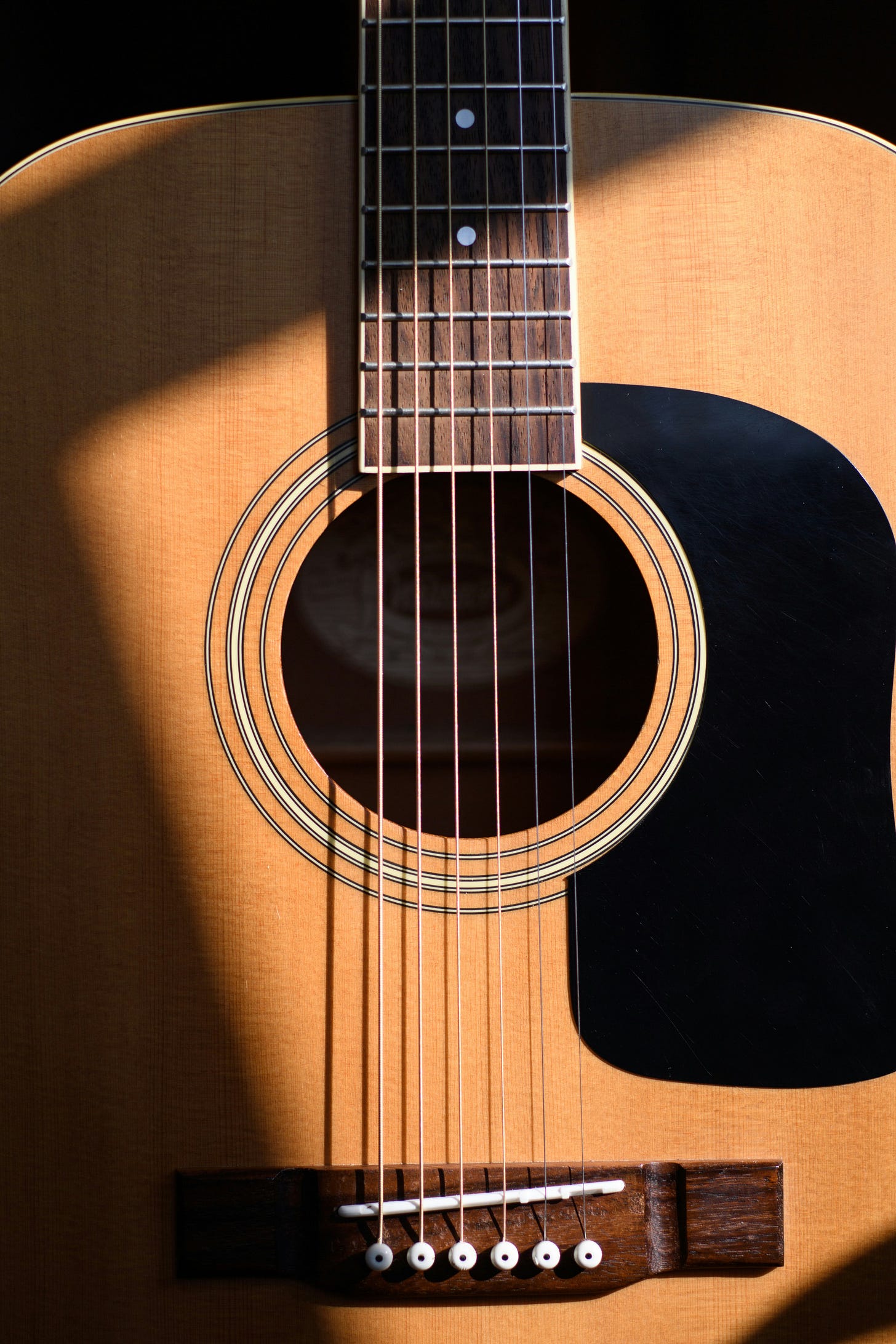
Music education programs often incorporate guitar lessons, recognizing the instrument’s educational value. Schools and camps use guitars to teach fundamentals, fostering both individual and group learning experiences.
For self-taught musicians, the guitar serves as a personal tutor. Countless tutorials, guides, and resources are available to help learners master techniques at their own pace.
The sense of achievement from playing the guitar fuels creativity. Students experiment with styles, compose original pieces, and collaborate with peers, broadening their musical horizons.
Through guitar education, individuals connect with historical and cultural contexts. They appreciate the instrument’s legacy and contribute to its ongoing story, cultivating a deeper understanding of music and the arts.
The Guitar in Film, Art, and Fashion
The guitar’s allure extends into film, art, and fashion, cementing its place as a multifaceted cultural symbol. Its presence in these mediums reflects its universal appeal and artistic influence.
In cinema, the guitar elevates storytelling. It underscores dramatic moments, enriches character development, and sets the mood for iconic scenes, creating auditory landscapes that linger with audiences.
Guitar-driven scores amplify the emotional depth of films. Classics like “La Bamba” and “Once” showcase the instrument’s contribution to music-infused narratives that captivate viewers.
In visual art, the guitar inspires countless creations, from dynamic paintings to sculptural works. Artists capture its grace and power, revealing its intimate relationship with the human spirit.
Fashion designers draw from the guitar’s rich history. They incorporate elements from rock and roll cultures, translating musical energy into wearable art that resonates with fashion enthusiasts.
Iconic guitarists serve as muses for fashion. Their distinct looks, marked by individuality and edge, influence styles that celebrate music’s dynamic synergy with personal expression.
Through film, art, and fashion, the guitar transcends its role as an instrument. It becomes a canvas for creativity, reflecting society’s evolving tastes and aspirations, while continuing to inspire future generations.
The Future of the Guitar and Its Legacy
The guitar’s story is far from finished. Its future promises exciting advancements and sustained cultural relevance. As technology evolves, so does the guitar, with new innovations enhancing the instrument’s capabilities and reach.
Digital tools and effects continue to expand the sounds a guitar can produce. These advancements make it possible to manipulate tones in ways previously unimaginable, opening new creative possibilities.
The rise of online platforms and social media provides unprecedented opportunities for aspiring guitarists. Musicians can now share their work with global audiences, connecting with fans and peers alike.
Music production has been revolutionized by digital audio workstations and recording software. Guitarists can now craft complex tracks with ease, embracing DIY production to create professional-sounding work from anywhere.
The guitar’s adaptability ensures its place in future music styles. Genres will continue to evolve, with the guitar serving as a constant source of inspiration and innovation.
Despite modern developments, traditional elements of guitar making remain respected and preserved. Builders fuse historical techniques with cutting-edge technology, ensuring craftsmanship and quality endure in a rapidly changing world.
Technological Advances and the Guitar’s Evolution
The guitar evolves with each new technological breakthrough. These innovations have reshaped how the instrument is played, experienced, and perceived.
MIDI technology allows guitars to interact with digital interfaces, blending the analog with the digital. This integration enables unprecedented levels of creativity, providing guitarists with endless sound possibilities.
Effects pedals and processors have expanded the guitar’s sonic palette. Musicians can manipulate the guitar’s sound in real-time, creating unique textures that challenge traditional notions of guitar music.
The development of smart guitars presents a new frontier. These instruments feature built-in digital interfaces, providing interactive feedback and enhancing playability for musicians of all skill levels.
Acoustic guitar amplification advances offer clear and natural sound for live performance. Advancements in pickups and preamps ensure acoustic guitars maintain their voice while reaching larger audiences.
Virtual reality and augmented reality also offer potential for immersive guitar experiences. These technologies could transform how we learn and interact with the guitar, bringing players closer to their musical visions.
Technological innovations guarantee the guitar’s evolution continues, allowing the instrument to remain relevant and inspiring across generations. The guitar will keep adapting, continuing to shape and be shaped by the ever-changing musical landscape.
The Enduring Influence of Legendary Guitarists on Today’s Music
Today’s music bears the indelible marks of iconic guitarists from the past. Their techniques, innovations, and spirit continue to influence musicians across genres, styles, and generations.
Guitarists like Eric Clapton and Jimmy Page laid the foundation for countless players. Their pioneering work in blues rock and heavy riffs remains an enduring source of inspiration.
Modern artists often pay tribute to these legends, covering their songs and borrowing elements of their style. This homage acknowledges the deep impact of old-timers on contemporary sounds.
Legendary guitarists introduced techniques that have become standard practice. Finger tapping, slide guitar, and feedback manipulation are now staples for guitarists exploring new musical frontiers.
The spirit of experimentation championed by guitar icons like Jimi Hendrix and Frank Zappa continues to inform modern players. Their willingness to push boundaries inspires today’s musicians to seek originality and innovation.
Contemporary artists stand on the shoulders of guitar giants, building upon a rich legacy while crafting their unique voices. The influence of legendary guitarists persists, ensuring that the timeless strings of history continue to resonate in the hearts and minds of listeners worldwide.
Conclusion: The Timeless Strings of History
The guitar’s journey is a tapestry woven through time, echoing the myriad of cultural shifts it has witnessed and influenced. From its ancient origins to its role in modern music, the guitar remains a timeless testament to innovation and human creativity.
Its evolution reflects the broader changes in society, adapting to new musical demands and artistic expressions. As both a symbol and a tool, the guitar has transcended its original purpose, becoming an icon of cultural and personal transformation.
Through its strings, the guitar conveys deep emotion and complex narratives. It has served as a companion in rebellion and an instrument of introspection, bridging the gap between artist and audience.
Each strum and chord carries the legacy of countless musicians who have left their mark. From the humble strumming’s of early players to groundbreaking performances of legendary guitarists, the guitar’s voice remains ever resonant.
Today’s guitarists continue to explore new realms of possibility, building upon the rich heritage that precedes them. As they do, they ensure the guitar remains a vibrant part of the musical landscape, cherished by both creators and listeners.
In its enduring versatility, the guitar holds the promise of future musical revolutions. As technology evolves and cultures shift, the guitar’s timeless strings will continue to tell stories, forging connections across the globe and across generations.
